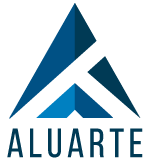- Ingeniería y Servicios Aluarte
- 938 384 2000
- contacto@aluarte.com.mx
What is DevSecOps? Definition, Benefits, and Tips
What is DevSecOps? Definition, Benefits, and Tips
Explore the comprehensive IBM portfolio of integration, AI, and automation capabilities designed to deliver the ROI you need. If you want to take full advantage of the agility and responsiveness of DevOps, IT security must play a role in the full life cycle of your apps. Red Hat OpenShift A container platform to build, modernize, and deploy applications at scale. Join hundreds of business leaders and entrepreneurs, who are part of our growing tech community. After ensuring you have the key elements listed above, take note of the following best practices that can help you improve the effectiveness of your DevSecOps program. Container orchestration network security policies—traffic flows are controlled at the level of the IP address or port.
- Typical focus areas include standardization, authentication, encryption, reducing API exposures, and isolating containers running microservices.
- The DevSecOps model requires security practices to be interwoven throughout the CI/CD pipeline.
- As a result, they can help developers understand security risks early in the SDLC.
- No matter an organization’s particular implementation, there will likely be some bumps in the road – people who can navigate them will be valuable.
- In the past, security was largely relegated to the Testing phase of the SDLC, when development was largely complete and the cost of fixing problems was high.
Organizations that want to unite IT operations, security teams and application developers need to integrate security into their DevOps pipelines. The objective is to make security a core component of the software development workflow, rather than retrofitting it later during the cycle. Coding performed in a fortified production environment ensures high resistance to security vulnerabilities and high-performance applications.
How DevSecOps works
The technical, as well as business benefits that organizations can reap from implementing DevSecOps, are very promising. Although you’ll most certainly come across some hiccups when you start, implementing DevSecOps can do a world of good for your organization in the long run. That’s why devsecops software development hiring a good solution provider like Plutora can make all the difference. There’s no doubt that DevSecOps revolutionizes the way organizations handle security. The next step is testing, wherein the robust automated testing framework inculcates strong testing practices into the pipeline.
Furthermore, continuous feedback allows the team to program alerts signaling the need for adjustments in the design of the application or tweaks to its security features. Knowledge regarding what each team needs to be aware of and how that affects the process of building the application can be used to decide the various conditions that should trigger different alerts. With well-designed secure DevOps automation, the team can produce secure products in less time. SAST tools are most common to be put into place during the coding process of a system development lifecycle. Following coding, SAST will also review that code as part of a build and deployment process.
Rapid, cost-effective software delivery
Rather, DevOps and security pros later recognized there was a bigger opportunity to embed security more proactively throughout the software delivery pipeline. DevOps and security pros recognized an opportunity to embed security more proactively throughout the software delivery pipeline. Build—At the build stage, DevSecOps applies controls that mitigate risks related to operating systems, application dependencies, and more. A good place to start DevSecOps testing is to automate your testing with Bitbucket Pipelines.
DevSecOps Capability Guide – Information Security Buzz
DevSecOps Capability Guide.
Posted: Thu, 18 May 2023 10:15:00 GMT [source]
Despite the best efforts by software companies, security breaches still occur. Part of the problem is that as software applications grow in codebase scale and complexity, so do the surface areas for security vulnerabilities and exploits. While there is still some consensus on what DevSecOps really means for business, it is plain to see its value in a world of rapid release cycles, evolving security threats and continuous integration. Making security an equal consideration alongside development and operations is a must for any organization involved in application development and distribution. When you integrate DevSecOps and DevOps, every developer and network administrator has security at the front of their mind when developing and deploying applications. DevSecOps packs all the punch; however, increased security is often perceived as a barrier to innovation and is believed to slow processes down.
What Are ZTNA Solutions?
Real-world events can be simulated, like servers that crash, hard drive failures, or severed network connections. Netflix is widely known for its Chaos Monkey tool, which exercises chaos engineering principles. Netflix also utilizes a Security Monkey tool that looks for violations or vulnerabilities in improperly configured infrastructure security groups and cuts any vulnerable servers. This includes continuous integration, continuous delivery/deployment (CI/CD), continuous feedback, and continuous operations. Instead of one-off tests or scheduled deployments, each function occurs on an ongoing basis.

The challenge is creating security as a collaborative framework which essentially becomes a shared responsibility among all shareholders. For DevSecOps to flourish, a security mindset and culture need to permeate an organization, especially among the stakeholders and the DevOps team responsible for implementing it. To be effective, DevOps revolves around the three pillars of process, technology tools, and organizational culture. Essentially, these are the common threads that run through DevOps and DevSecOps, connecting them. They add up to software that is more secure produced by a pipeline that moves faster. Use HTTPS to transfer data securely, integrate with your identity provider, and implement role-based security policies.
Custom code security
Identity and access management consists of methods that use centrally defined policies to control access to data, applications and other network assets. IAM should govern access to all aspects of the DevOps environment, at every stage of the SDLC. This helps prevent unauthorized access to sensitive systems and blocks lateral movement.

Security issues can be addressed as they emerge – when they’re faster, easier, and less expensive to fix – instead of after a product goes into production. It broadens processes to include applications and infrastructure in the entire development lifecycle. Cloud technology, as well as the use of containers and microservices, require organizations to reevaluate their security policies, practices and tools. In this environment, many organizations are looking toward cloud-native security platforms as the answer.
Improved software
As the security team fixes problems upfront in the design process, their work precludes many future problems. This not only results in a more secure application but also reduces the number of issues your security infrastructure will have to deal with down the road. When teams are able to share knowledge and work together, they can overcome challenges more quickly and efficiently.

In order for developers to share responsibility for the security of the software they are building, security needs to be considered before any code is written. It should be woven into user stories, raised during backlog review meetings, and discussed when planning each sprint. When working out how to tackle a new feature, take the time to discuss the risks it might present and how to mitigate them.
What tools and processes you need to enable in your DevSecOps process?
Rather than retrofitting security into the build, DevSecOps emerged as a way to integrate security management earlier in the development process. Security tests are performed as the final step before product release, but testing should ideally take place throughout the entire development process. Static application security testing , dynamic application security testing , and less common but equally essential techniques like penetration testing, Red Teaming, and Threat Modeling are all effective https://globalcloudteam.com/ testing regimens. These latter approaches can be helpful because they approach code from a hacker’s perspective without disrupting the production environment. DevOps practices are designed to speed and streamline development processes through collaboration and automation. By creating a tighter integration between development and operations teams, shortening development cycles, and automating where possible, DevOps provides significant benefits compared to traditional development methodologies.

